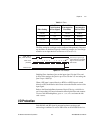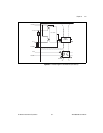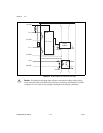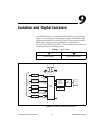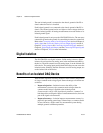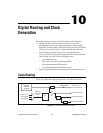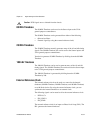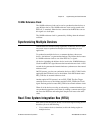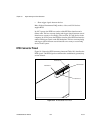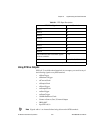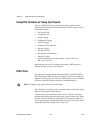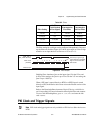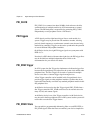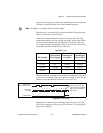
Chapter 10 Digital Routing and Clock Generation
NI 6238/6239 User Manual 10-2 ni.com
Caution RTSI signals are not isolated from the chassis.
80 MHz Timebase
The 80 MHz Timebase can be used as the Source input to the 32-bit
general-purpose counter/timers.
The 80 MHz Timebase can be generated from either of the following.
• Onboard oscillator
• External signal (by using the external reference clock)
20 MHz Timebase
The 20 MHz Timebase normally generates many of the AI and AO timing
signals. The 20 MHz Timebase also can be used as the Source input to the
32-bit general-purpose counter/timers.
Your device generates 20 MHz Timebase by dividing down the 80 MHz
Timebase.
100 kHz Timebase
The 100 kHz Timebase can be used to generate many of the AI and AO
timing signals. The 100 kHz Timebase also can be used as the Source input
to the 32-bit general-purpose counter/timers.
The 100 kHz Timebase is generated by dividing down the 20 MHz
Timebase by 200.
External Reference Clock
The external reference clock can be used as a source for the internal
timebases (80 MHz Timebase, 20 MHz Timebase, and 100 kHz Timebase)
on an M Series device. By using the external reference clock, you can
synchronize the internal timebases to an external clock.
The following signals can be routed to drive the external reference clock.
•RTSI<0..7>
•PXI_CLK10
•PXI_STAR
The external reference clock is an input to a Phase-Lock Loop (PLL). The
PLL generates the internal timebases.



